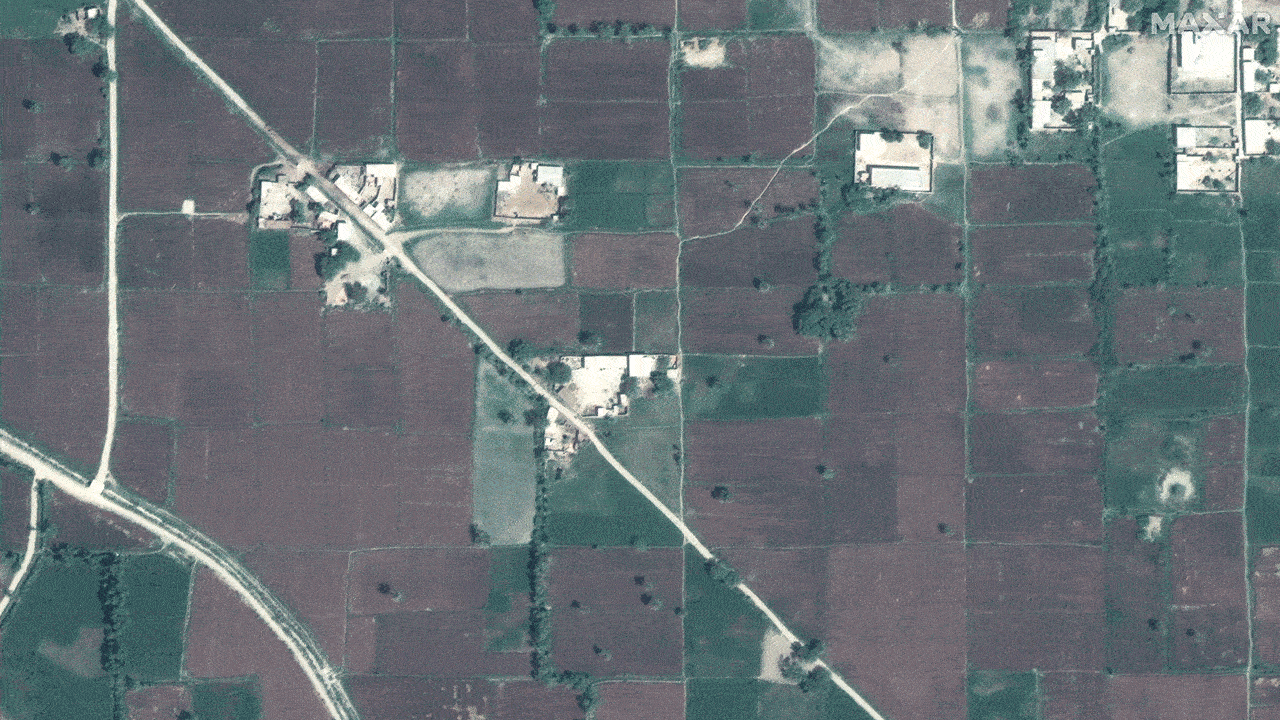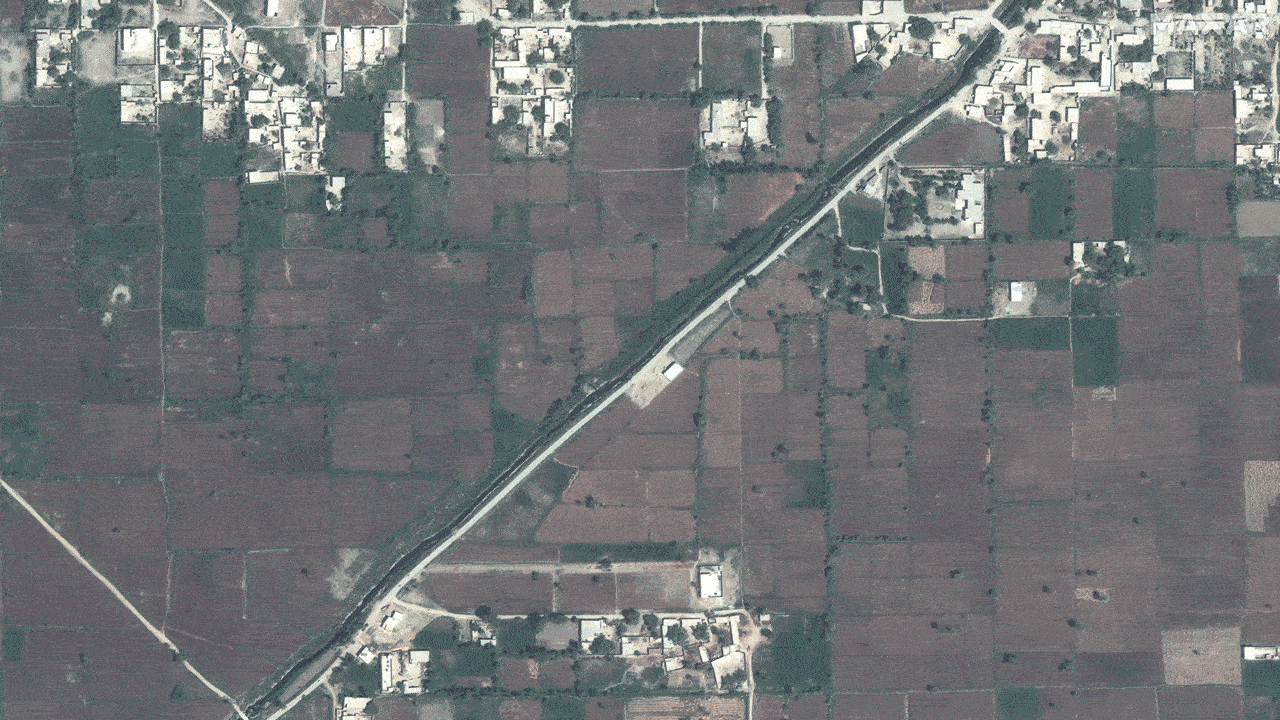Pakistan floods are tied to global warming, and exceed past events

Large parts of Pakistan's Sindh and Balochistan provinces are inundated by floodwaters, with normally dry land transformed into lakes when viewed from space. More than 1,000 people are dead, and 33 million affected after about eight weeks of heavy monsoonal rains.
The big picture: The scale and severity of this event are staggering, with the area and population affected exceeding the severity of disastrous flooding seen in 2010, which cost about $10 billion.
- Fahad Saeed, a climate scientist at Climate Analytics who is based in Islamabad, told Axios that the floods have likely been worsened by human-caused climate change.
- The 2010 extreme rains fell over the course of just three days, and hit a different part of the country, Saeed said, whereas this event was caused by relentless waves of heavy rains from the South Asian monsoon, which have been unusually prolific.
- In Sindh Province, where Karachi is located, Monsoon season precipitation has averaged about 470% of normal, with some spots seeing 40 inches or more, while in Balochistan, the rain during the monsoon has reached 400% of average, Saeed said, citing Pakistani government figures.

Threat level: Climate studies warn of back-to-back extreme weather events due to human-caused global warming, and Pakistan is Exhibit A.
- Pakistan experienced a deadly heat wave in March and April that sent temperatures soaring above 120°F.
- The heat wave compromised the country’s wheat crop, and the floods will hurt cotton yields at a time when food staples are harder to come by due to the Ukraine war. Pakistan may be turning to Russia for imported wheat to supplement its low supplies.
- A study Saeed coauthored in May showed that human-caused climate change made the heat wave at least 30 times more likely and upwards of 1°C (1.8°F) hotter on average than it would have been in the absence of human emissions of greenhouse gasses.
Between the lines: As temperatures warm, the air can hold more moisture — about 7% more for each 1°C increase in temperature. The monsoon gathers moisture from the Bay of Bengal and focuses it on certain areas via clusters of thunderstorms.
- Within these storms, the climate-change-related increase in moisture can be a lot higher than the 7% increase would suggest, as they draw warm, moist air from vast distances and concentrate it over smaller areas.
- Additionally, research shows that climate change is likely to make the Asian monsoon more variable, with heavier rainfall during active years.
- “Climate change must be playing a role,” Saeed said of the ongoing flooding.

The intrigue: Pakistan contributes less than 1% of the world’s greenhouse gas emissions, yet is experiencing some of its most severe impacts.
- The estimated 1 million houses destroyed in the flooding, for example, were occupied by people who had a very low carbon footprint compared to the average American or European citizen.
- “Those who are stranded at the moment,” on the roofs of their houses, Saeed said, “They had nothing to contribute to climate change and still they are there, under the open skies.”
Of note: The floods are hitting at a particularly vulnerable time, with turmoil in Pakistan's government, and an economic crisis that may make recovery more difficult.
- Pakistan is also a vulnerable country to climate change-enhanced disasters, rating among the top 10 most vulnerable nations to long-term climate risks by the Global Climate Risk Index.
What they’re saying: The growing consequences of climate change and limited infrastructure and preparedness have left millions of Pakistanis devastated and in need of support," Farah Naureen, country director for Pakistan with the aid group Mercy Corps, in a statement.
- “It may take the country years to recover from a disaster of this scale,” Naureen added.
What’s next: One of the expected flash points at the upcoming U.N. climate summit in Egypt in November will be the topic of “loss and damage,” which refers to the developed world’s responsibility to compensate developing countries for the damage they incur from climate change.
- Pakistan will chair the main alliance of developing countries at those talks, and the heat wave combined with these floods is likely to add a sense of urgency to these discussions.
- Historically, industrialized countries including the U.S. have been reluctant to discuss and unwilling to commit to direct financial payments for developing countries’ climate change-related losses.